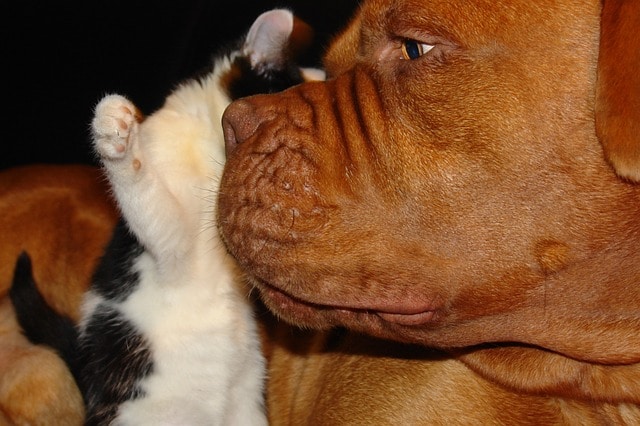Introducing Your Cat And Dog To Your New Home

Moving with pets can be especially difficult because they have no idea what’s going on. While you and even your children might see opportunity in a new home, pets only see insecurity. Reassurance is the most important part of moving with a pet.
Cats and dogs require some of the same care when moving but dogs are much more easily adaptable. Conventional wisdom says that cats are attached to their surroundings while dogs are attached to their people. There’s a lot of truth to that, but it’s also overly simplistic. Dogs do get upset when being uprooted from their surroundings and cats do get attached to their people, although perhaps not as obviously. Here are some tips for moving each:
If your cat is an indoor/outdoor cat or an outdoor cat, allow more time for the transition process. Begin several weeks before the move by feeding and entertaining the cat inside the home as much as possible. The ASPCA has some great tips for moving an outdoor cat indoors.
If your cat is an indoor cat, the transition will be similar to that of a dog. First, get your pet used to a crate. Dogs are naturally drawn to cozy crates, so if you have a younger dog, that should be no problem.
Check your new home for any escape routes. Check for holes in the fence or areas where a dog can dig his way out. Make sure all the doors latch. Keep doggie doors closed for a while until the dog is used to his new home. Close windows or secure all screens.
Cat and puppy proof your home. Even dogs who you think have outgrown bad behavior might revert to some old habits. Hide electrical cords and window cover pulls.
During the move, confine the animals to crates or to a single room. Provide lots of comfortable bedding, a blanket that smells like you and some familiar toys. Provide a litter box for the cat. Familiarity is key.
Once you are moved in, dogs will be somewhat comforted by the smell of your belongings, but it’s a good idea to avoid leaving the animals alone for a couple of days. Acquaint them slowly. Play games by putting treats in various areas of the home.
Keep the routine. Even if you are in the middle of the move, feed your animals at their normal feeding time and if you have dogs, take about 20 minutes to walk them. If you can spend more time, better. A tired animal is far more likely to adapt well.
If your pet is having trouble adjusting or it is very nervous or skittish, your vet might be able to help with some anti-anxiety medication to help get through the move.